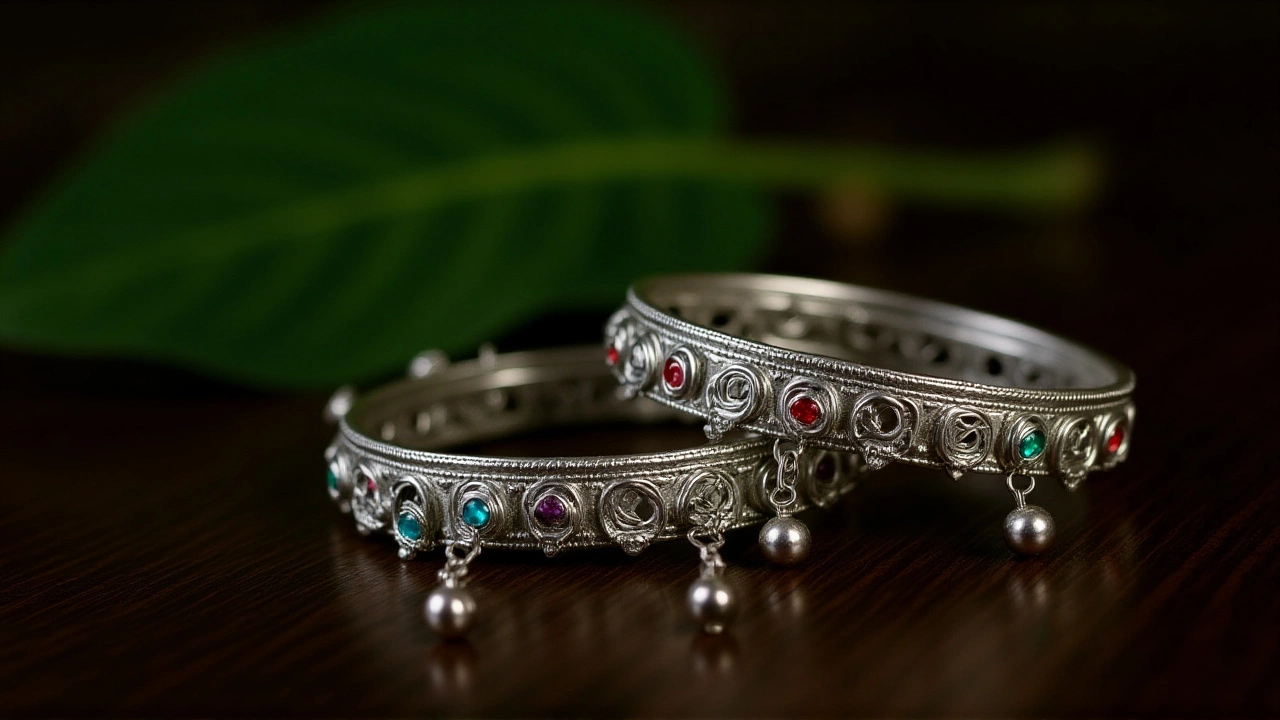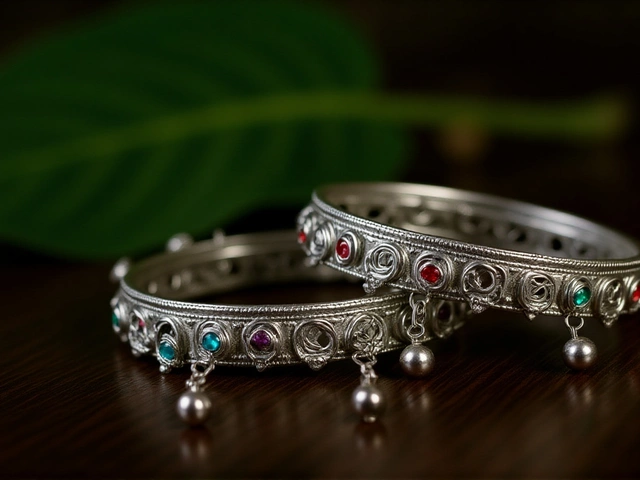On October 17, 2025, silver shattered records on the Multi Commodity Exchange (MCX), surging to Rs 1,70,415 per kilogram in the December 2025 futures contract — a 19.8% monthly spike and the highest intraday price ever seen in India. The rally wasn’t just about Diwali gifts. It was a perfect storm: festive buying, a weaker dollar, escalating US-China trade tensions, and a historic exodus of physical silver from Comex warehouses. Within weeks, the metal would give back nearly 15% — but the underlying story? Far more complex than a seasonal spike.
Why silver went ballistic — and why it wasn’t just FOMO
The run-up wasn’t random. With Diwali and Dhanteras looming, jewelry demand spiked. But unlike gold, silver’s surge had industrial teeth. Solar panel manufacturers, electronics firms, and even electric vehicle battery makers were snapping up supply. Tanishq, Titan’s jewelry division, saw customers buying gold not just for tradition — but because they feared prices would climb further. "People are rushing to buy gold, thinking that gold prices will rise further," said Ajoy Chawla, CEO of Tanishq. "It’s FOMO, not fatigue. That’s unusual." Meanwhile, global markets were on fire. Comex silver hit $53.76 per ounce — an all-time high. But here’s the twist: while retail investors piled in, institutional players were quietly shifting physical metal. Over 20 million ounces vanished from Comex vaults in two weeks — the biggest drop in 25 years. At the same time, silver ETFs absorbed nearly 11 million ounces. The market was being pulled in two directions: one side hoarding physical, the other betting on paper gains.The structural shift: Silver’s third shot at $50
This wasn’t the first time silver flirted with $50. It hit that level in 1980 during the Hunt brothers’ silver corner, and again in 2011 amid post-financial crisis inflation fears. Both times, the rally collapsed. But Mahendra Patil, Founder and Managing Partner at MP Financial Advisory Services LLP (MPFASL), sees this as different. "Silver is experiencing a phase of structural endurance rather than speculative exuberance," he told The Economic Times. His reasoning? Industrial demand is now permanent, not cyclical. Solar energy alone could consume 150 million ounces annually by 2030 — nearly double today’s total global mining output. "We’re not just seeing a price spike," Patil added. "We’re seeing a reallocation of capital toward a metal that’s becoming scarce in the real economy." The data backs him up. While gold’s rally was largely driven by central bank buying and geopolitical fear, silver’s climb was fueled by factories, not just families. And when the correction came, it wasn’t panic selling — it was profit-taking.The pullback: Dollar strength and diplomacy cool the flames
By October 27, 2025, silver had plunged to Rs 146,931 per kg on MCX — a 13.8% drop from its peak. Gold fell too, to Rs 1,23,000 per 10 grams. The trigger? A stronger US dollar and signs of progress in trade talks. "The pullback was primarily driven by a stronger dollar index and encouraging developments in US trade negotiations with China and India," explained Rahul Kalantri, Vice President of Commodities at Mehta Equities. "Progress on the Gaza peace front added to the risk-off reversal." The drop wasn’t just emotional. Technical indicators confirmed it. The Relative Strength Index (RSI) on Comex silver had spiked above 75 — a classic overbought signal. When the dollar rallied and trade tensions eased, the speculative layer peeled off. But the foundation? Still intact.What’s next? Key events that could reignite the rally
Market watchers are now紧盯 (紧盯 = closely watching) three events:- The US Federal Reserve’s policy meeting and remarks from Fed Chair Jerome Powell on November 5, 2025 — any hint of delayed rate cuts could pressure metals.
- The summit between US President Donald Trump and Chinese President Xi Jinping in South Korea on November 8, 2025 — if trade talks stall, expect renewed safe-haven flows.
- The European Central Bank’s policy review on October 30, 2025 — a dovish tilt could weaken the euro and boost dollar-denominated commodities.
Why this matters beyond your jewelry box
This isn’t just about investors or brides. Silver’s surge reflects a deeper shift: the transition from a commodity driven by sentiment to one anchored in industrial necessity. If solar and EV demand keeps growing — and mining output can’t keep pace — we’re not just seeing price volatility. We’re seeing the early stages of a structural shortage. That means higher prices aren’t just possible. They’re probable. And for India, where 80% of silver demand comes from households and 15% from industry, the ripple effects could hit everything from household budgets to manufacturing costs.Frequently Asked Questions
Why did silver prices fall after hitting a record high?
Silver’s correction was driven by a stronger US dollar, improved US-China trade talks, and progress in Gaza peace efforts — all reducing safe-haven demand. Profit-taking also played a role, as technical indicators like the RSI had surged into overbought territory above 75, signaling a likely pullback. Physical demand remained strong, but speculative positions unwound rapidly.
Is this silver rally different from past spikes in 1980 or 2011?
Yes. Past spikes were largely speculative — driven by short-term traders or hedge funds. This time, industrial demand from solar panels, electronics, and EVs is structural and growing. Silver’s role in clean energy tech means demand isn’t just cyclical; it’s embedded in global decarbonization goals. That makes sustained higher prices more likely, even if short-term volatility continues.
How is the silver rally affecting Indian consumers?
For households, silver jewelry prices have risen sharply, with wedding and festival purchases now costing 20% more than last year. For industry, manufacturers of electronics and solar components face higher input costs, which may trickle into consumer goods prices. Retail investors are also seeing increased volatility in MCX silver futures, making it harder to time purchases.
What’s the significance of the 20 million ounce drop in Comex silver inventories?
That’s the largest two-week withdrawal in 25 years. It signals massive physical demand — likely from Asian refiners, Indian jewelers, and industrial buyers who need actual metal, not paper contracts. When warehouses empty, it tightens physical supply, creating a "back-to-back" pricing effect that can push futures prices higher even if paper markets correct.
Should investors buy silver now, or wait for a deeper correction?
Experts suggest a wait-and-watch approach. Support levels for silver are now at Rs 1,45,150–1,46,250 per kg on MCX. If prices hold there, it could signal a base is forming. But if it breaks below Rs 1,44,000, further downside to Rs 1,40,000 is possible. For long-term investors, dollar-cost averaging into physical silver or ETFs may be smarter than timing the market.
How do US interest rates impact silver prices in India?
When the US Federal Reserve signals rate cuts, the dollar weakens, making dollar-denominated silver cheaper for foreign buyers — increasing global demand and pushing up MCX prices. Conversely, higher rates or hawkish rhetoric from Fed Chair Jerome Powell strengthen the dollar, making silver less attractive. Since MCX prices track Comex, US monetary policy directly shapes Indian silver valuations.

